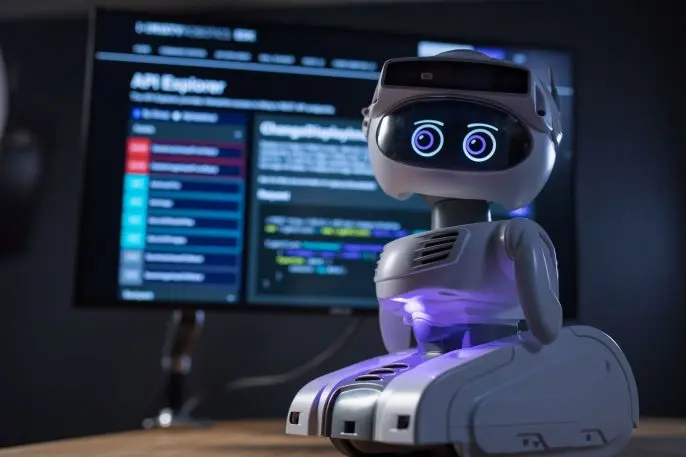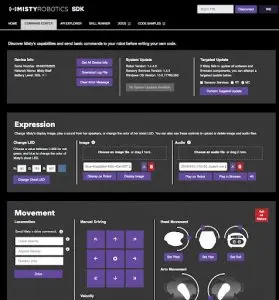We’ve been promised a robot revolution for decades. But bots have yet to infiltrate our lives at home in any substantial way. That’s probably because no one has yet figured out their “killer app,” the use case that’s so compelling that people flock to purchase a robotic companion.
But a new robot called the Misty II is taking the same approach that helped make the iPhone so powerful. Instead of trying to build a bot as well as figure out everything that people might want to use it for, Misty Robotics is designing the hardware and then enlisting independent developers and other companies to create “skills” for Misty. These skills could turn Misty into anything from a security robot that roams your house, to a podcast reader that talks to you as you go about your morning routine, to a fall detector that can send family members a picture if an elderly person happens to take a tumble.

That’s why creating these skills for Misty won’t be limited to robotics pros. The company says that typical software developers should be able to take the basic tool kit that it provides—which includes voice recognition, face recognition, autonomous navigation and mapping, and even 50 sets of expressive eyes—and use it for whatever situation they can dream up. The company also provides CAD models of the robot so developers can 3D-print their own additions, like a fingerprint sensor, a cup holder, or a temperature sensor, and add them to Misty’s back or arms.

Many of the things that developers might program for Misty—like home security or podcast reading—sound suspiciously similar to what an Amazon Echo or Google Home speaker can already do (sans moving around). But Bernstein is betting that consumers will prefer to interact with the friendly, anthropomorphized shape. “People basically want to interact more with like a robot like Misty than, say, a tube or something on your desk,” he says.
Misty II started shipping about six weeks ago to the company’s crowdfunding supporters, and today it’s available to anyone who’s interested in coding it. Bernstein says there’s already been interest from people who work with developmentally disabled kids, from sports stadiums who want to use Misty as a concierge for box seats, and even from libraries—Palo Alto’s library has one for its makerspace. The New York-based magician Doug McKenzie also uses Misty in his shows, where the robot acts as his assistant while he performs illusions.
[Video: courtey of Misty Robotics]Eventually, Misty will be available for consumers, and it’s been designed to be easy to interact with. The robot sits on tractor-like treads that enable it to move around indoors, and it has a short little body and a large head that swivels around its neck so that it can look at you when you’re talking. Bernstein and his team designed Misty to be friendly, with a touch of personality—if you touch one side of its head, its eyes light up and it makes a loud, pleasant noise (though if you touch the other side, its animated brows furrow, a somewhat arbitrary way to show that Misty has opinions, too).
By the time that Misty might make it to normal people’s homes, Bernstein is hoping that it will be able to offer hundreds of developer-built skills that have all been vetted for security and privacy by the company. What exactly that will look like? Even Bernstein doesn’t know. “This is probably going take a while for this ecosystem to come together,” he says. That’s why he’s already trying to build a community around Misty, to bring together people with problems that Misty could solve with techies who are looking for inspiration.
While it’s still early days, the iPhone-type model of apps for Misty could put the robot in a much better position than its home-robot predecessors like Jibo, which tried to build the hardware and the killer app—a decision that ultimately proved unsustainable. But with Misty, the dream of having a personal robot at your beck and call might be that much closer.
Recognize your brand’s excellence by applying to this year’s Brands That Matter Awards before the early-rate deadline, May 3.